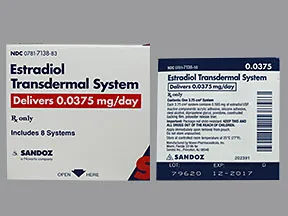For more information on how to use our Transdermal EZ Derm-Pens, please click here. Compounded transdermal gels. How well do they work? Freks1988, Pain Management, 7, 05:56 PM. Transdermal T3 anyone? Birchtree, Thyroid Disorders, 4, 02:27 PM. Has anyone heard of a transdermal patch that helps w/ drooling? Rhales199, Cerebral Palsy, 1,.
Androgen deficiency syndrome in men is a frequently diagnosed condition associated with clinical symptoms including fatigue, decreased libido, erectile dysfunction, and metabolic syndrome. Game Bred Apbt Kennel. Serum testosterone concentrations decline steadily with age. Lorem Ipsum Font.

The prevalence of androgen deficiency syndrome in men varies depending on the age group, known and unknown comorbidities, and the respective study group. Reported prevalence rates may be underestimated, as not every man with symptoms of androgen deficiency seeks treatment. Additionally, men reporting symptoms of androgen deficiency may not be correctly diagnosed due to the vagueness of the symptom quality. The treatment of androgen deficiency syndrome or male hypogonadism may sometimes be difficult due to various reasons. There is no consensus as to when to start treating a respective man or with regards to the best treatment option for an individual patient.

There is also lack of familiarity with treatment options among general practitioners. International Management Helen Deresky 8th Edition Pdf more. The formulations currently available on the market are generally expensive and dose adjustment protocols for each differ. All these factors add to the complexity of testosterone replacement therapy. In this article we will discuss the general indications of transdermal testosterone replacement therapy, available formulations, dosage, application sites, and recommended titration schedule.
Introduction Late onset hypogonadism with androgen deficiency syndrome in men is a frequently diagnosed condition associated with clinical symptoms including fatigue, decreased libido, erectile dysfunction, decreased muscle and lean body mass, low bone mineral density, metabolic syndrome, and depression.– Total, free, and bioavailable testosterone and sex hormone binding globulin may all be significantly reduced in men with metabolic syndrome compared to those without metabolic syndrome. In older men an optimal plasma testosterone level is associated with reduced all-cause mortality, and serum testosterone concentrations decline steadily with age. Some studies report that the mean total serum testosterone concentration of men at age 75 years is about two thirds of the levels at age 25 years. Approximately 50% of men older than 80 years and about 20% of men older than 60 years have serum testosterone concentrations at least two standard deviations below the mean concentration for young men., The actual prevalence of androgen deficiency syndrome or male hypogonadism in men is not definitely known. When considering symptomatic androgen deficiency as defined by a total serum testosterone concentration below 300 ng/dL and/or free testosterone concentration below 5 ng/dL in addition to the presence of low sex drive, erectile dysfunction, osteoporosis or fracture, or two or more of the following symptoms including sleep disturbance, depressed mood, lethargy, diminished physical performance, the prevalence of symptomatic androgen deficiency in men between age 30 and 79 years is about 6%.
Obviously, the definition of male hypogonadism depends not only on clinical symptoms and signs but also on cutoff levels of serum testosterone concentrations. Most authorities would consider as the lower limit of the normal range a serum total testosterone concentration of 315 ng/dL in healthy nonobese men, and of 6.5 ng/dL for free testosterone (measured by equilibrium dialysis or absolutely reliable assays). A consensus statement by the International Society of Andrology, International Society for the Study of Aging Male, European Association of Urology, European Academy of Andrology, and American Society of Andrology, concluded that there are no generally accepted lower limits of normal serum testosterone and that men with a serum concentration above 350 ng/dL generally do not require substitution therapy, while men with serum testosterone concentrations below 230 ng/dL will usually benefit from testosterone replacement therapy (TRT). Of note, there are large inter-individual variations of free testosterone concentrations and it is unclear how a certain cutoff level of total or free serum testosterone can be used to confirm “normalcy”. For instance, man A may have had a total testosterone value of 900 ng/dL at age 20 years and now at age 50 has a value of 400 ng/dL with symptoms of androgen deficiency syndrome, whereas man B with a total testosterone value of 400 ng/dL at age 50 years and no symptoms of androgen deficiency syndrome may have had a value of 500 ng/dL at age 20 years. The normal total serum testosterone range in healthy adult males is said to be between 315 and 1,000 ng/dL based on blood production and metabolic clearance rates.